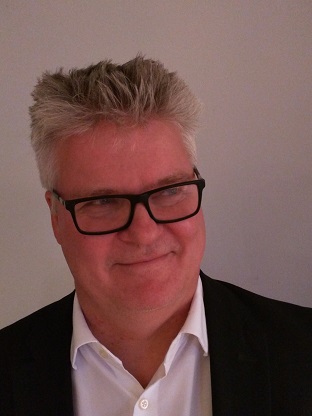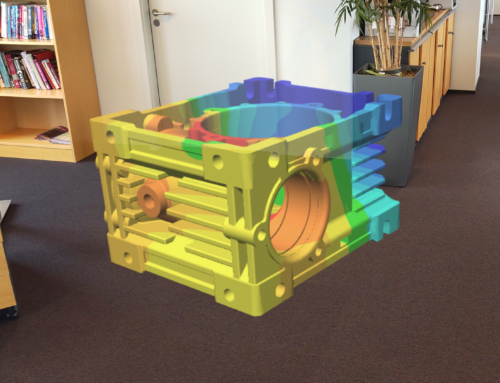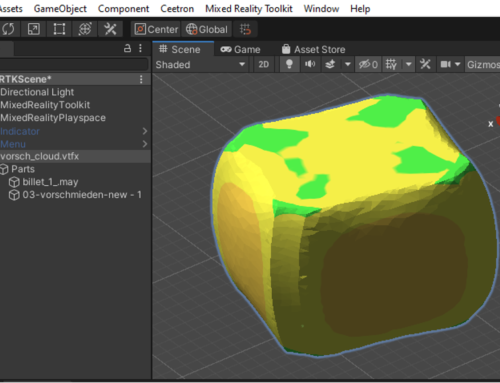
Grim Gjønnes, Head of Sales & Marketing, Ceetron AS.
I am just back from CADFEM’s 34th Fachkonferenz zur numerischen Simulation in der Produktentwicklung. The event took place in Nürnberg during October 5-7, 2016. It was a wonderful event for any engineer with interest in FEA, CFD, or DEM: 700-800 CAE professionals in dark suits from major German engineering organizations discussing key challenges in the field of CAE over three (pretty long and exhausting) days.
There were around 130 presentations, a large number of mini-seminars, two social events, the German way, plus a most interesting visit to Germanisches Nationalmuseum, GNM. All the megatrends in CAE were of course covered, including IoT, big data, digital twins, scalability / elasticity / cloud, CAE as service, workflows / SPDM / appification, multi-physics, multi-scale, 3D printing, and particle simulation, plus all imaginable applications of CFD, FEA, and DEM. There were also around 30 exhibitors, predominantly CAE software and services companies, many of which are not really present outside Germany (though they should be, they have interesting offerings). Examples include (excluding the obvious ones): Dynardo (optimization, stochastics), FEMopt Studios (optimization), GOM (measurement technology), inuTech (R&D in the area of numerical simulations), and iSimQ (CFD services).
However, it was sehr besonders that when taking a closer look at some of these software companies, and despite their technically strong offerings, they seemed to maintain a strategic focus on Germany and commit to overly conservative roadmaps. The strategic focus on Germany could be explained by simply being located in a very attractive home market. However, explaining this conservatism needed some additional thought and additional conversations. Indeed, it seems that the conservatism amongst tier N (N >= 1) suppliers may really be caused by the conservatism of the big manufacturing companies, and that these manufacturers impede the innovation pace in the rest of the supply chain, including the software providers.
The difference with US companies is stark: in the US mostly any CAE software provider with a great technical idea would be able to attract capital to develop that idea, alone or jointly with one or more of the software provider’s customers. In Germany, in contrast, it seems that the commercialization of a good idea would directly or indirectly be driven by the manufacturing companies’ internal timelines, and that say a major automotive manufacturer would exercise strong influence on the road maps of its suppliers of CAE software.
In preparation for this blog post and to better understand the issues at hand, I reread a text book of Eric von Hippel, Professor at MIT Sloan School, my alma mater, on innovation theory. With reference to that theory, I believe it could be argued that innovation in German CAE community to some extent is hampered by user-side conservatism, not driven by user-side innovation (von Hippel’s favourite term). The implication is that a German CAE software provider’s success in the home market (by being able to sell to for example a large car manufacturer and align with its internal timelines) may limit its ability to compete effectively in the international markets.
Sehr besonders was also the importance attached to remote visualization. I learned that this is a German-specific phenomenon caused by strict and complex labour laws in Germany, in effect making it important for employers to avoid being seen as engaging in situations of false self-employment (see for example http://hsfnotes.com/employment/2015/07/21/germany-ongoing-efforts-by-authorities-to-prevent-false-self-employment/). There are apparently a number of issues with such false self-employment, both for the contractor and for the client, and linked to such issues as social security contributions, statutory rights to the employee (holiday entitlements, sick pay, working time etc.), joint liability (with the employee) for unpaid tax, administrative fines and/or criminal prosecution in case of intent. For employers it means often that they as a matter of policy force their contractors to work off premises, and so that contractors must access CAE systems through remote desktop-like solutions.
Coming from the cloud-based 3D visualization side myself, I was interested in the performance of these remote visualization solutions, many of which were German-specific. I therefore engaged in dialogues with a number of fellow booth staff in the exhibition area trying to learn more about these offerings. (This was not mystery shopping and I presented myself as Ceetron employee and representative of a company with potentially competing offerings.) After having been demoed 3-4 of these remote visualization solutions, and with all respect for the solution providers in this area, I assessed such remote visualization solutions to be subpar regarding visualization performance relative to the interactivity expectations of the typical simulation engineer (and relative to Ceetron’s offerings in the area of cloud-based visualization). All caveats apply, I am biased, and you may want to try for yourself, for example at https://cloud.ceetron.com/v/cee_3WayValve.
To check that I was not far off, I consulted with our CEO, Dr. Tor Helge Hansen, who was also attending the conference. Here is what he said: “Ceetron has since 2010 invested significant money in R&D projects related to visualization from the cloud. There are fundamentally two approaches: pixel-based streaming and 3D object streaming, and we have worked with some of the leading academic organizations in Norway regarding both. Based on those projects, we have concluded that the industry will have to find alternative solutions to simplistic pixel-based streaming. Our upcoming release of Ceetron Cloud Components, which is based on 3D object streaming and scheduled for release in primo November, will fill this gap.”
But again, a wonderful event, and I can only concur with the underlying theme if this conference: “Simulation ist mehr als Software”. I would also like to congratulate CADFEM’s grand old man Dr. Ing. Christoph Müller and his colleagues at CADFEM for having created this arena for learned insight and reflection for German CAE professionals. On behalf of Ceetron, I hope to meet friends, customers and partners at CADFEM’s 35th simulation conference on 15-17th November 2017 in Koblenz.
Grim Gjønnes, Dr. Ing.
Head of Sales & Marketing in Ceetron AS







Leave A Comment
You must be logged in to post a comment.